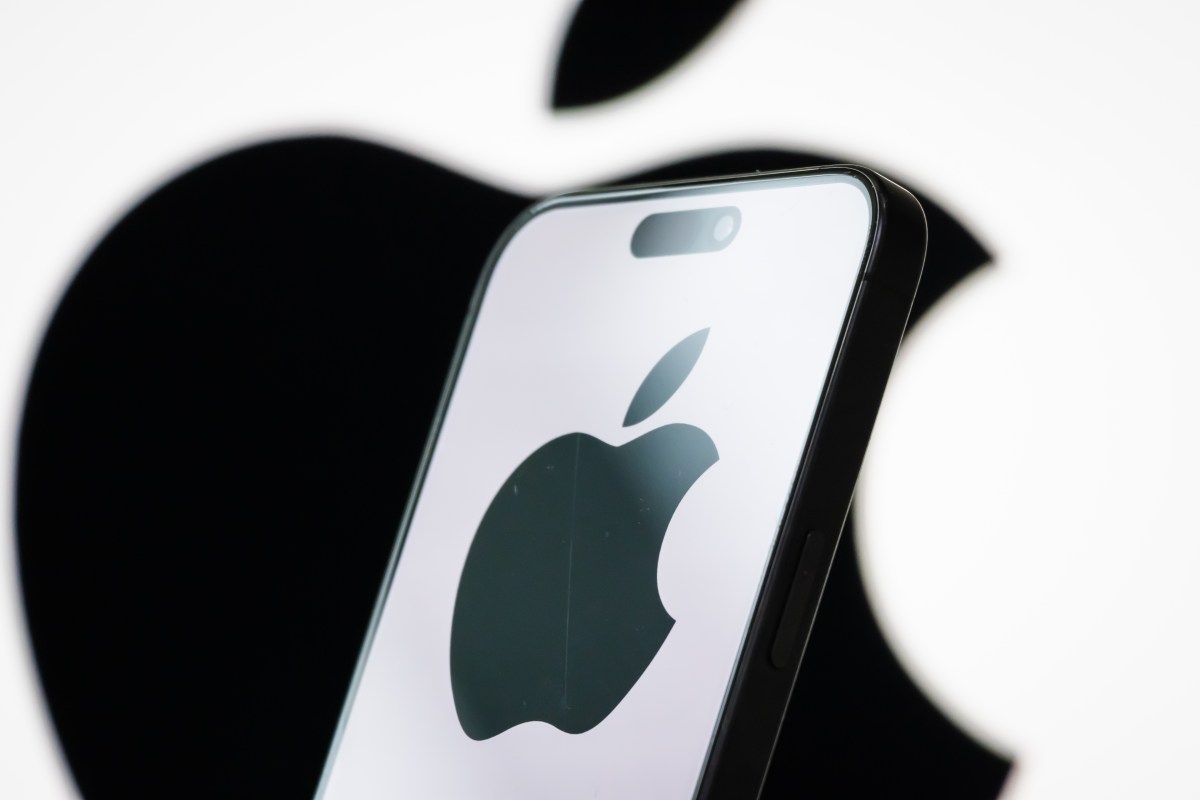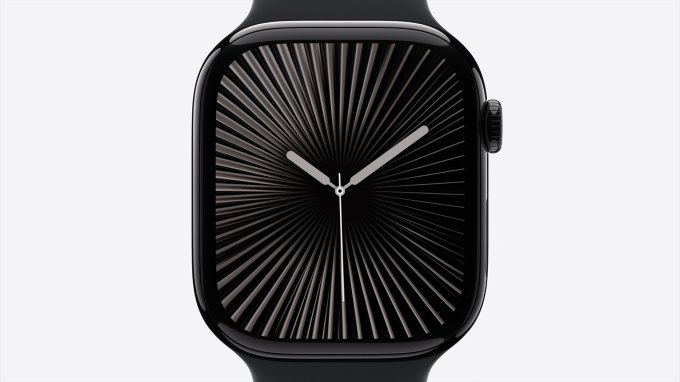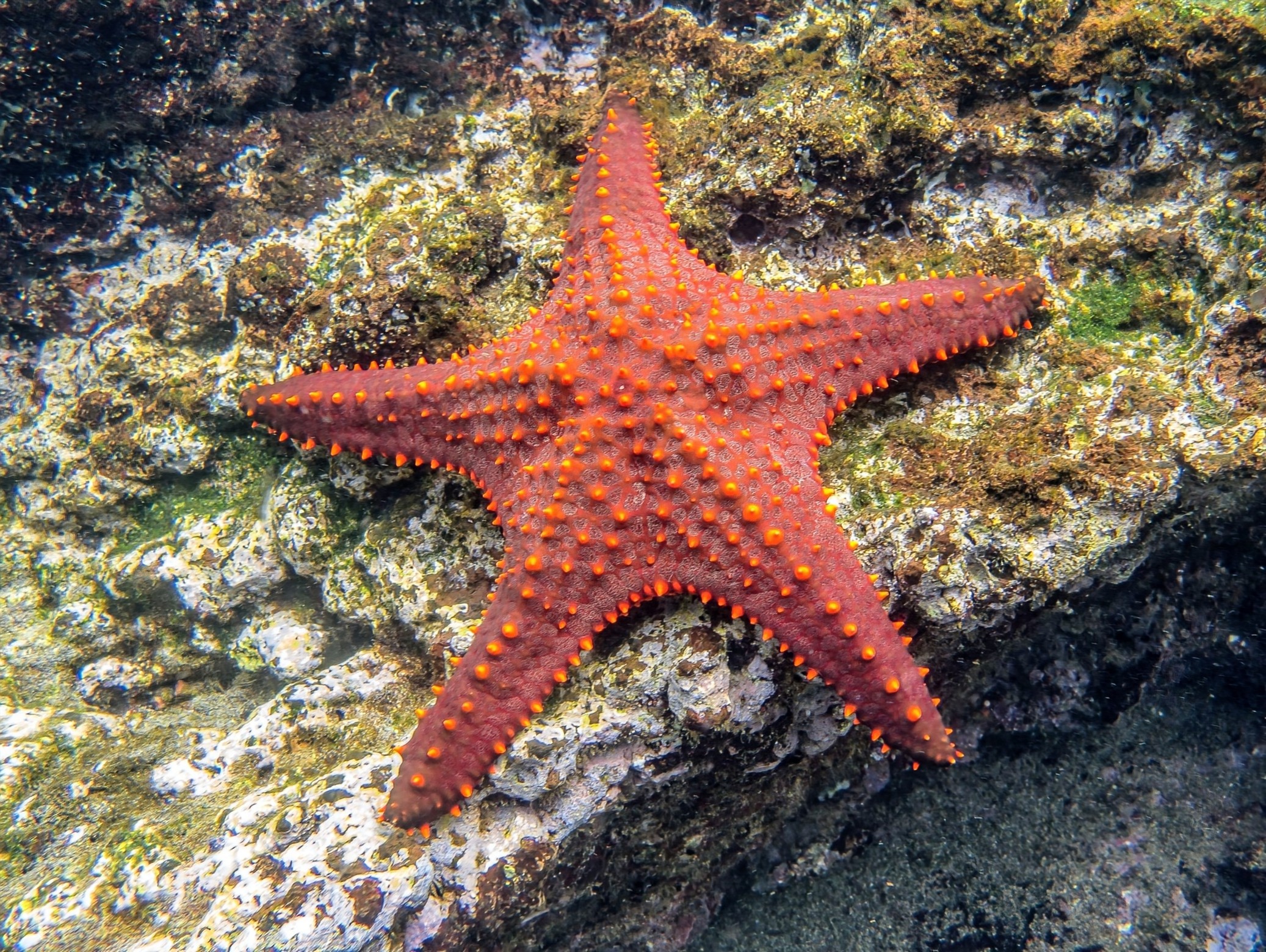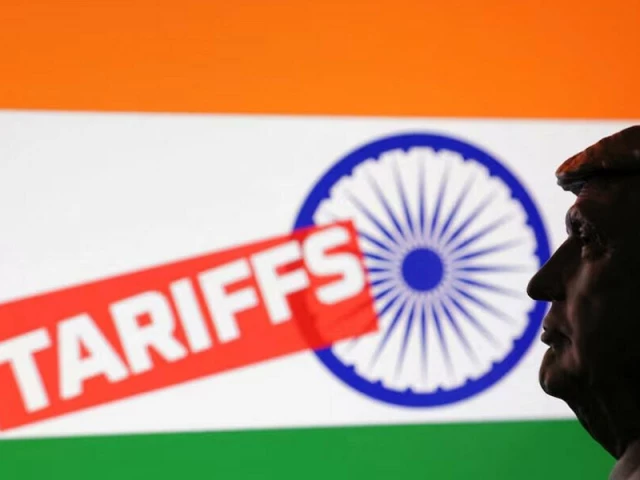- Gold falls as markets await clarification on tariffs, inflation data Reuters
- Gold (XAUUSD) & Silver Price Forecast: Fed Dovish Tilt and CPI Data Could Drive Breakout Moves FXEmpire
- Gold slips as easing geopolitical tensions weigh; US inflation data in focus Profit by Pakistan Today
- Gold Price Forecast: XAU/USD declines as bulls hesitate near $3,400, US inflation in focus FXStreet
- Forecast update for Gold -11-08-2025 Economies.com
Blog
-
Gold falls as markets await clarification on tariffs, inflation data – Reuters
-
Denmark and Spain stay perfect to open main round with double-digits wins
Denmark and Spain secured their fourth wins at the 2025 IHF Men’s Youth World Championship, with almost identical scores, 38:25 against Japan and 37:25 against Saudi Arabia, edging even closer to progressing to the quarter-finals.
Group IV
Denmark vs Japan 38:25 (19:11)Denmark had an up-and-down roller-coaster type of a preliminary round at the 2025 IHF Men’s Youth World Championship, where they had won against Czechia, the United States of America and Tunisia, but they were down against all sides during their matches.
Therefore, with the business end of the competition approaching, there was no question about the Scandinavian side needing to improve their performance and that is exactly what they did against Japan, starting off the match with a 5:0 unanswered performance, preventing the Asian side to score for the first six minutes and 25 seconds.
With Frederik Nygaard Jespersen and Emil Darling Sorensen scoring for fun in the first half, the gap grew even bigger, as after 20 minutes, Japan’s efficiency was down to 29% and the two Denmark goalkeepers, Carl Poulsen and Johannes Dalsgaard had a combined saving efficiency of 50%.
Japan did everything they could, but their attack was severly limited by the strong Danish defence, and at the break, the Asian side, which needed to win to extend their chances of progressing to the quarter-finals, was down by a whopping eight-goal margin, 19:11.
There was no slowing down Denmark, which continued to pounce in the second half and they eventually matched the output from their first half, scoring 19 times, to jump to a 38:25 win against Japan, their fourth in four matches at Egypt 2025, leaving Japan with an outside chance of progressing.
Player of the Match: Emil Hansen (Denmark)
Main Round – Group II
Spain vs Saudi Arabia 37:25 (23:10)Saudi Arabia battled valiantly to reach the main round, but a meeting with a European powerhouse always promised to be arduous. Spain, entering the phase on the back of three consecutive wins, asserted control immediately. After Saudi Arabia’s brief 1:0 lead, Spain accelerated with a 7:1 run, featuring six different scorers.
Struggling to find solutions in attack, Saudi Arabia endured a seven-minute drought before netting their second goal. Defensive lapses and 10 turnovers in the opening 20 minutes left them exposed, and Spain capitalised to establish a 20:9 advantage. By half-time, Marcos Fis Ballester, Ian Barrufet and David Amigó had combined for 13 goals, putting Spain firmly in command.
With a +13 cushion, Spain eased off early in the second half, allowing Saudi Arabia to trim the deficit to 24:14. While not decisive, the spell offered the Asian side a morale boost. Spain responded with a time-out, switched to a 5–1 defence and played seven-on-six in attack, quickly reasserting control.
The adjustments proved effective, and by the 50th minute Spain had stretched the score to 28:15, with minutes spread across the roster. Twelve of their 14 outfield players found the scoresheet. Saudi Arabia varied their tactics to limit the margin, ultimately falling by 12.
With this victory, Spain move top of Group II on four points and have the quarter-finals well within reach ahead of their clash with Iceland. Saudi Arabia meet Serbia on Tuesday, seeking another win at this World Championship.
Player of the Match: Marcos Fis Ballester (Spain)
President’s Cup – Group III
Faroe Islands vs Mexico 41:16 (19:6)Mexico continued to struggle to establish rhythm at Egypt 2025. Following heavy defeats to France, Norway and Argentina, a difficult first half against the Faroe Islands followed a similar pattern. Offensive errors born of inexperience proved costly as Mexico managed only two goals in the first 16 minutes, the second after an 11-minute drought.
The Faroe Islands took full advantage, racing to an 8:2 lead. The margin might have been even greater, but their shooting efficiency hovered around 67% for much of the half. By the 24th minute, the gap had reached +10 (15:5), with Mexico offering little threat in attack. The Faroese goalkeeper faced only nine shots on target, saving three, while all three Mexican goalkeepers featured and each recorded a single save.
The second half became a formality as the Faroe Islands rotated heavily to conserve energy for upcoming matches. Mexico sought to surpass their tournament-high of 16 goals but were stuck on 13 in the 54th minute. The Faroese hit a 20-goal lead when Torkil Dahl converted from the left wing, later cruising to 36:13 before closing out comfortably. In the final minutes, Mexico did match their tournament-high of 16 goals—equal to their tally against Argentina—but it did little to alter the narrative of a dominant Faroese performance.
With this win, the Faroe Islands move to four points and edge closer to contending for the President’s Cup trophy. Mexico, still seeking their first victory, will turn their focus to Uruguay in hopes of avoiding the battle for the final positions.
Player of the Match: Jákup Egholm (Faroe Islands)
President’s Cup – Group IV
Bahrain vs United States of America 39:33 (23:13)Bahrain opened their President’s Cup campaign with a second consecutive win, keeping alive their chances of topping Group IV and progressing to the Placement Matches 17–20. Conversely, the United States of America remain without a point at Egypt 2025, having lost all four of their matches.
The USA never led, as Bahrain seized control early and moved ahead 10:5 by the 11th minute. The Asian side relied on disciplined defence and a cohesive team display, repeatedly punishing the North Americans’ turnovers. A 6:0 run established the first double-digit advantage, 16:6, by the 19th minute. Although the USA replied with a 3:0 surge, Bahrain restored a 10-goal cushion just before the break when Abbas Ali converted from the seven-metre line.
After the interval, Ali and Ahmed Eid continued to spearhead Bahrain’s attack, pushing the lead to 30:19 by the 40th minute. A subsequent sequence of ball losses and missed shots halted Bahrain’s scoring for eight minutes, allowing the USA—spurred by Edwin Bengtsson—to string together a 6:0 run and reduce the deficit to 25:30.
The North Americans briefly rekindled their hopes, but Bahrain reasserted control. A 4:0 run opened a 35:26 gap in the 53rd minute, effectively sealing the outcome. Mahmood Yusuf, who contributed seven assists alongside five goals, was named Player of the Match. While the USA improved offensively after half-time and registered 33 goals—their highest tally in a single game at Egypt 2025—Bahrain were clearly the superior side.
Player of the Match: Mahmood Yusuf (Bahrain)
Continue Reading
-
Five World Championship teams to join hosts at Korea Invitational
Aug 12, 13:00 local (04:00 UTC): Japan v France
Aug 12, 16:00 local (07:00 UTC): Korea v Argentina
Aug 12, 19:00 local (10:00 UTC): Czechia v Sweden
Aug 13, 13:00 local (04:00 UTC): Sweden v Argentina
Aug 13, 16:00 local (07:00 UTC): Korea v France
Aug 13, 19:00 local (10:00 UTC): Japan v Czechia
Aug 15, 11:00 local (02:00 UTC): Czechia v France
Aug 15, 14:00 local (05:00 UTC): Korea v Sweden
Aug 15, 17:00 local (08:00 UTC): Japan v Argentina
Aug 16, 11:00 local (04:00 UTC): France v Sweden
Aug 16, 14:00 local (07:00 UTC): Korea v Japan
Aug 16, 17:00 local (10:00 UTC): Czechia v Argentina
Aug 17, 12:00 local (03:00 UTC): Korea v Czechia
Aug 17, 15:00 local (06:00 UTC): Argentina v France
Aug 17, 18:00 local (09:00 UTC): Japan v SwedenContinue Reading
-

Tim Burton reveals why Jenna Ortega was born to play Wednesday
Tim Burton has spoken candidly about why he never doubted Jenna Ortega was the perfect choice for Wednesday Addams. The 66-year-old filmmaker, who directs and executive produces Netflix’s hit series Wednesday, said he knew instantly during casting that Ortega carried something special, the essence of the iconic character.
Burton explained that Wednesday isn’t a role just anyone can take on, describing it as something that has to be in a performer’s DNA. He drew a comparison to working with Winona Ryder on Beetlejuice, saying Ortega shared that same silent movie actor quality, where even a simple stare could capture everything about the character. For Burton, her ability to convey so much without words made her an obvious fit.
Known primarily for films such as Edward Scissorhands and Beetlejuice, Burton admitted he enjoys the faster pace and spontaneity of TV production, which doesn’t allow time for overthinking. He also shrugged off concerns about working with streaming platforms, saying his career choices are often driven by instinct rather than a calculated legacy.
Ortega’s performance has propelled her to global fame, but the actress has been open about the pressures that followed season one’s success. She revealed that the sudden attention left her feeling unhappy and overwhelmed, especially as someone who considers herself introverted. However, she has since taken on a more active role behind the scenes, serving as a producer on the upcoming season.
By sitting in on meetings and contributing ideas, Ortega says she’s learning new skills and finding her footing in production. Her growing involvement hints at a long-term connection to the series, one that blends her acting talent with her evolving creative vision.
As both Burton and Ortega shape the show’s future, fans are eager to see how their shared understanding of the character will evolve in season two, promising another darkly charming chapter for Wednesday Addams.
Continue Reading
-
FTSE 100 rises as financial stocks gain; Ukraine talks in focus – Reuters
- FTSE 100 rises as financial stocks gain; Ukraine talks in focus Reuters
- Business news live: Diageo profit drop, BP under shareholder pressure The Independent
- FTSE 100 today: Index rises, pound slips; data points to softer UK labour market Investing.com
- Stocks mixed as eyes turn to US inflation data MarketScreener
- FTSE 100 Up Marginally As Investors Look For Direction Nasdaq
Continue Reading
-

iPhone 17, the ‘thinnest iPhone ever,’ and everything else we’re expecting out of Apple’s hardware event
Apple usually announces its new hardware in the fall, and this year is likely no different. The event is reported to be on September 9, and Apple is expected to release its iPhone 17 lineup, along with updates for the Apple Watch and AirPods.
As always, there are many rumors circulating, including bigger screens and improved cameras for the iPhone 17 models and the introduction of an ultra-thin iPhone Air that could replace the Plus model.
iPhone 17, 17 Pro, and 17 Pro Max
The iPhone 17 is expected to get a significant makeover to align more closely with the Pro models. It could feature a slightly larger 6.3-inch screen, which is an increase of 0.2 inch compared to the iPhone 16, as well as a 120Hz display, a substantial upgrade from the current 60Hz. It’s also rumored to have a 24-megapixel front camera. It could also come in new colors: purple and green.
The Pro’s upgrades will be noticeable on the back of the phone, rumors suggest. Conceptual renderings show that the three rear cameras may be arranged in a rectangular bar that extends from one edge of the device to the other. The flash, light sensor, and microphone would be positioned far to the right side. Where the MagSafe charger is, the Apple logo is said to be centered for aesthetic reasons.
Notably, the iPhone 17 Pro may switch materials, potentially replacing the titanium band around the screen with aluminum. This could help Apple reduce costs as well as provide a lighter feel.
The iPhone 17 Pro Max is expected to see fewer upgrades, too, with the most significant change being a slightly thicker body, likely to accommodate a larger battery — which would be a huge win.
According to leaker Instant Digital, the iPhone 17 is predicted to be priced around $800, and the Pro model could cost around $1,050. The Pro Max is expected to have a price tag of $1,250.
Techcrunch event
San Francisco
|
October 27-29, 2025iPhone Air
Image Credits:Apple Track The most widely discussed rumor is that Apple might be introducing its slimmest phone ever, the iPhone Air, which may replace the iPhone Plus.
This rumored device is said to have a profile thickness of 5.5 mm, making it about 0.08 inch thinner than current iPhones. It’ll also feature a 6.6-inch screen.
This move appears to be Apple’s response to the trend of slimmer smartphones, following in the footsteps of other companies like Samsung and Huawei. The iPhone Air could potentially outshine the Samsung Galaxy S25 Edge, which measures 5.8 mm thick. Additionally, it may pave the way for Apple’s long-rumored foldable phone, predicted to launch in September 2026.
While the thin design is stylish, it would come with some compromises. Based on the renders we’ve seen, the Air is expected to have only one rear camera lens, unlike the Plus, which has two. There are also rumors that there may not be enough space for a speaker at the bottom, meaning the only audio source could be the front earpiece at the top.
Reports suggest the device will be priced at $950 and will be available in black, silver, and light gold.
Apple Watch Series 11, Ultra 3, and SE 3

Image Credits:Apple After a two-year wait, there are various rumors surrounding the Apple Watch Ultra 3, suggesting it will undergo significant changes. These may include faster charging speeds, 5G support, and satellite connectivity. Additionally, it’s speculated that the watch will feature a larger display.
One of the most exciting potential upgrades for both the Ultra 3 and Series 11 is the incorporation of blood pressure monitoring capabilities. This feature would notify users if their blood pressure levels are too high or too low. Apple is also considering adding a sleep apnea feature. However, according to Bloomberg’s Mark Gurman, the company may need to delay the release of these features for further tweaks.
The third generation of Apple Watch SE isn’t expected to receive major updates, aside from possibly a larger display. There continue to be reports of a plastic version being introduced, according to Gurman.
Rumored prices for the watches are: $250 for the Apple Watch SE 3, $400 for the Series 11, and $800 for the Ultra 3.
AirPods Pro 3

Image Credits:Apple After the release of the AirPods Pro 2 in 2022, it’s about time for an upgrade, and Apple might just be ready to deliver. Rumors suggest that the AirPods Pro 3 will feature a sleeker design, touch-sensitive controls, smaller earbuds, and a slimmer case. Additionally, the H3 chip is expected to enhance active noise cancellation and adaptive audio.
Continue Reading
-

UW researchers test common disinfectants’ abilities to fight antibiotic resistance at the genetic level
August 11, 2025
UW researchers tested the efficacy of several common disinfectants against antibiotic resistance genes in bacteria. Shown here is lead author Huan He preparing agar plates for measuring inactivation of bacteria in disinfection experiments.Mark Stone/University of Washington
Antimicrobial resistance is a lurking threat in hospitals around the world. As more strains of bacteria and other microbes evolve defenses against available drugs, more patients run the risk of contracting infections that defy treatment.
Now, University of Washington researchers offer new insights into measures currently used to control the spread of antibiotic resistant bacteria and other infectious agents in health care facilities.
In a recent paper published in Environmental Science & Technology, the team studied the efficacy of nine common disinfectants used in health care facilities or households — such as ethanol, hydrogen peroxide, benzalkonium chloride and UV light — against three well-known strains of antibiotic-resistant bacteria. The researchers first evaluated how successfully each disinfectant killed (or more accurately “inactivated”) the bacteria.
Then the team went a step further. It also assessed the damage the disinfectants did to the root cause of the resistance: the bacterial genome itself. And while all the cleaners did a great job of stopping the spread of bacteria, the picture was very different when the team zeroed in on DNA.
“What we’re learning is that it’s not just the bacteria that we need to deal with in hospitals and elsewhere. It’s also the behavior of their DNA in these environments,” said lead author Huan He, who completed this research as a UW doctoral student in the civil and environmental engineering department and is now an assistant professor at Tongji University.

Lead author Huan He examines growth of bacteria on agar plates before and after disinfection.Mark Stone/University of Washington
Within bacterial cells, the source of antibiotic resistance is specific genes — individual portions of DNA — that instruct a cell to protect itself against certain antibiotics. Modern disinfectants do an impressive job of stopping bacterial cells in their tracks, but a bacterium’s genes may survive even the death of the cell. And, thanks to a trick called “horizontal gene transfer,” genes from one bacterium — even if that bacterium has been killed — can sometimes find their way into a new living bacterium, thus passing on antibiotic resistance.
In short, stopping the bacteria themselves isn’t always enough to prevent the creep of resistance.
“Increasingly, environmental engineers are thinking about and treating resistance genes as an emerging contaminant,” said He. “In public health settings such as hospitals, we might disinfect and sterilize an operating room to remove any bacterial contamination, but what if resistance genes survive? They could potentially reach other bacteria and contribute to more dangerous antibiotic resistant hospital-acquired infections.
“Our previous work has demonstrated resistance genes can stay active in horizontal transfer after water and wastewater disinfections, which led us to wonder whether similar things could occur in health care and personal-care disinfection practices.”
The experiment pitted the nine disinfectants against three kinds of antibiotic-resistant bacteria, including methicillin-resistant Staphylococcus aureus (MRSA), the microbe responsible for life-threatening staph infections. Researchers placed samples of the bacteria in different environments, mostly as dried drops on stainless steel and nonstick surfaces that are common in hospitals and at home. They then applied the disinfectants and measured the effects on both the bacterial cells and the genes in question.
As expected, the disinfectants did a great job of stopping the bacteria. However, most had a negligible impact on the resistance-conferring genes. The DNA survived largely intact, and it was free to find its way into new bacteria.
There were some positive and negative standouts, though frequently not the cleaners the team expected.
“Chlorine, under the conditions we tested, seemed to be less effective against DNA than we originally anticipated, whereas another common cleaner called phenol, which we didn’t think would be effective, actually ended up working relatively well in some cases,” said senior author Michael Dodd, a UW associate professor in the civil and environmental engineering department.
The winner in many of the experiments was UV light, which did significant damage to the offending genes — though ultimately less damage than the team anticipated.
“UV irradiation seems to be one of the more effective approaches to both inactivating bacteria and degrading their DNA,” Dodd said. “We know that UV light directly damages DNA, so we weren’t necessarily surprised to see it perform well here. But it was a welcome result nonetheless.”
The researchers were quick to point out that existing disinfection regimens in hospitals are still effective and critical for preventing the spread of disease.

Senior author Michael Dodd with Huan He.Mark Stone/University of Washington
This work can help researchers home in on the tools that offer the best one-two punch against problematic bacteria and their genes. Moving forward, the team wants to learn more about how best to optimize these cleaners’ effects, especially when new factors like ambient temperature, humidity and density of bacterial cells are taken into account. But, the results from this paper could already help hospitals refine their disinfection protocols.
“If you know you have a patient in a hospital or other health care facility who’s infected with an antibiotic-resistant pathogen, I think we do have enough evidence at this stage to suggest trying certain disinfectants over others when cleaning surfaces or instruments that the patient may have been in contact with,” said Dodd. “For example, UV light could be a good choice, whereas benzalkonium chloride might not be.”
Additional co-authors on this paper are Sin-Yi Liou, a former UW graduate researcher who is now a postdoctoral researcher at Gwangju Institute of Science and Technology; Kyle K. Shimabuku, a former UW research assistant who is now an associate professor at Gonzaga University; Peiran Zhou, a former UW graduate researcher who is now a medical resident at the UW School of Medicine; Yegyun Choi, a former UW guest researcher who is now a research professor at Gwangju Institute of Science and Technology; John S. Meschke, a UW professor in the environmental and occupational health sciences department; Marilyn C. Roberts, UW professor emeritus in the environmental and occupational health sciences department; and Yunho Lee, a professor at the Gwangju Institute of Science and Technology.
This research was funded by the National Science Foundation, the National Natural Science Foundation of China, the Fundamental Research Funds for the Central Universities and the Allen & Inger Osberg Endowed Professorship.
For more information, contact Michael Dodd at doddm@uw.edu and Huan He at huanhe@tongji.edu.cn
Tag(s): antibiotic resistance • College of Engineering • Department of Civil & Environmental Engineering • Huan He • Michael Dodd
Continue Reading
-

Bacteria that’s melting starfish alive has finally been identified
For more than a decade, sea star wasting disease (SSWD) has ravaged starfish along North America’s Pacific coast. It shreds arms, melts bodies, and pushes iconic species like the sunflower sea star to the brink of extinction.
Now there’s a turning point: researchers have identified a single bacterial species – Vibrio pectenicida – that can trigger the full suite of wasting symptoms.
This breakthrough offers a path toward earlier detection and, eventually, smarter response strategies, even as the ocean’s “three-dimensional dynamic environment” makes intervention challenging.
Pacific starfish face collapse
The scale and speed of SSWD are unprecedented. Since 2013, outbreaks have swept from Alaska to Mexico, striking more than 20 sea star species.
Early signs include loss of appetite and small white lesions. Then the animals go limp as the disease hits the water vascular system. Arms detach and sometimes wriggle independently, and the entire body disintegrates into mush within days.
“Sea star wasting disease is pretty horrid,” said Hugh Carter, a marine invertebrate curator at the Natural History Museum in London and a starfish expert. “It causes the starfish to stop feeding and forms white lesions across the body as the soft tissue starts breaking down.”
The ecological shock is profound. Sunflower sea stars – important predators of sea urchins – have lost more than 90 percent of their population, and the cascade is visible on the seafloor.
“When we lose billions of sea stars, that really shifts the ecological dynamics,” said lead author Melanie Prentice from the University of British Columbia (UBC). “In the absence of sunflower stars, sea urchin populations increase.”
“This means the loss of kelp forests, which has broad implications for all the other marine species and humans that rely on them. So, losing a sea star goes far beyond the loss of that single species.”
Solving a marine mystery
For years, scientists pursued competing hypotheses, with a virus suspected early on but later ruled out. One reason the search took so long is that sea stars deteriorate rapidly – often within a week of exposure.
By the time researchers collect samples, secondary infections and generalized stress responses may obscure the primary trigger.
The new study overcomes those obstacles. In controlled laboratory experiments, the team raised sunflower sea stars and exposed them to diseased tissue in different ways.
Simply touching infected parts or being injected with tissue homogenates proved deadly: 92 percent of exposed sea stars died.
Scientists name the starfish killer
Critically, when the homogenates were filtered or heat-treated first, the starfish did not develop the disease. This was strong evidence that a living microbe was the cause.
The researchers then compared coelomic fluid – the sea stars’ blood-like internal fluid – from healthy and exposed animals. One signal dominated.
“When we compared the coelomic fluid of exposed and healthy sea stars, there was basically one thing different: Vibrio,” said senior author Alyssa Gehman from UBC. “We all had chills, we thought that’s it. We have it, that’s what causes wasting.’”
To satisfy the gold standard of causation, they isolated Vibrio pectenicida from diseased sea stars, cultured it to a pure strain, and injected it into healthy animals. The recipients rapidly developed classic wasting symptoms.
Field data reinforced the lab results: in British Columbia, V. pectenicida appeared in sea star samples only after an outbreak had begun.
Progress with no easy fix
The identification of V. pectenicida marks the first time researchers have reproduced the full disease by introducing a single pathogen.
“There have been lots of competing theories over what causes sea star wasting disease, so it’s great that we know what is actually causing it,” Carter said. “It’s a massive step forward, but we’re still a long way from a solution.”
Pinpointing the bacterium could improve surveillance, allowing diagnostics to target V. pectenicida during early flare-ups. But practical control is far tougher offshore.
“While knowing the bacteria that cause it might allow us to detect new outbreaks earlier, it’s still hard to quarantine or treat the disease in the 3D dynamic environment of the sea. It’ll take a great deal more research until sea star wasting disease can be managed effectively.”
Warming seas fuel starfish disease
Like many vibrios, V. pectenicida appears to thrive in warmer conditions, which aligns with observations that wasting spreads faster during marine heatwaves.
The bacterium is already infamous in aquaculture as a scallop pathogen that secretes toxins. Those same virulence factors may damage sea star tissues and water vascular systems, accelerating the grisly progression.
Unpacking that mechanism – what toxins are produced, how they interact with sea star immunity – will be crucial for forecasting risk and testing interventions.
With oceans warming due to climate change, the stakes are rising. Hotter waters can both boost bacterial growth and stress sea stars, potentially lowering their defenses.
Understanding that one-two punch could help managers anticipate where and when disease pressure will spike, enabling them to prioritize monitoring or protective measures for the most vulnerable populations.
Fighting future outbreaks
The immediate priorities are clear. Researchers need to map the distribution of V. pectenicida across species and coastlines and refine rapid tests for early detection. They also need to investigate how environmental variables – temperature, salinity, organic matter – modulate bacterial bloom-and-bust cycles.
Hatchery and aquarium settings may serve as testbeds for mitigation strategies, from biosecurity protocols to microbiome-based approaches that bolster sea stars’ defenses.
But translating lab breakthroughs into ocean-scale solutions will take time. In the near term, the best defense for kelp forests and the myriad species that depend on them may be vigilant disease surveillance.
Ecosystem management that reduces compounding stressors, such as overgrazing by urchins, is also crucial.
Even so, science has turned a corner. Identifying the culprit shifts the field from guesswork to targeted investigation and from helpless witness to informed action.
The study is published in the journal Nature Ecology & Evolution.
—–
Like what you read? Subscribe to our newsletter for engaging articles, exclusive content, and the latest updates.
Check us out on EarthSnap, a free app brought to you by Eric Ralls and Earth.com.
—–
Continue Reading
-

Trump’s tariffs trigger boycott calls against US brands in India
Listen to article From McDonald’s and Coca-Cola to Amazon and Apple, US-based multinationals are facing calls for a boycott in India as business executives and Prime Minister Narendra Modi’s supporters stoke anti-American sentiment to protest against US tariffs.
India, the world’s most populous nation, is a key market for American brands that have rapidly expanded to target a growing base of affluent consumers, many of whom remain infatuated with international labels seen as symbols of upward mobility. India, for example, is the biggest market by users for Meta’s WhatsApp, and Domino’s has more restaurants than any other brand in the country. Beverages like Pepsi and Coca-Cola dominate store shelves, and people still queue up when a new Apple store opens or a Starbucks cafe offers discounts.
Although there is no immediate indication of sales being hit, there is a growing chorus both on social media and offline to buy local and ditch American products after Donald Trump imposed a 50% tariff on goods from India, rattling exporters and straining ties between New Delhi and Washington.
Read More: Pakistan, India should talk before it is too late
McDonald’s, Coca-Cola, Amazon and Apple did not immediately respond to Reuters queries. Manish Chowdhary, co-founder of India’s Wow Skin Science, took to LinkedIn with a video message urging support for farmers and startups to make “Made in India” a “global obsession,” citing South Korea’s global success with its food and beauty products. “We have lined up for products from thousands of miles away. We have proudly spent on brands that we don’t own, while our own makers fight for attention in their own country,” he said.
Rahm Shastry, CEO of India’s DriveU, which provides an on-call driver service, wrote on LinkedIn: “India should have its own home-grown Twitter/Google/YouTube/WhatsApp/Facebook — like China has.”
Indian retail companies give foreign brands like Starbucks stiff competition domestically, but going global has been a challenge. Indian IT services firms, however, have become deeply embedded in the global economy, with TCS and Infosys providing software solutions worldwide.
On Sunday, Modi made a “special appeal” for self-reliance, telling a gathering in Bengaluru that Indian technology companies make products for the world but “now is the time for us to give more priority to India’s needs.” He did not name any company.
Also Read: India faces tough choices under US tariff pressure
Don’t drag my McPuff into it
Even as anti-American protests simmer, Tesla launched its second showroom in India in New Delhi, with Monday’s opening attended by Indian commerce ministry and U.S. embassy officials. The Swadeshi Jagran Manch, linked to Modi’s Bharatiya Janata Party, held small rallies across India on Sunday, urging people to boycott American brands.
“People are now looking at Indian products. It will take some time to fructify,” Ashwani Mahajan, the group’s co-convenor, told Reuters. “This is a call for nationalism, patriotism.” He also shared a table circulating on WhatsApp, listing Indian brands of bath soaps, toothpaste, and cold drinks that people could choose over foreign ones.
On social media, one of the group’s campaigns is a graphic titled “Boycott foreign food chains,” displaying logos of McDonald’s and other restaurants. In Uttar Pradesh, Rajat Gupta, 37, dining at a McDonald’s in Lucknow on Monday, said he was unconcerned about the tariff protests and simply enjoyed his 49-rupee ($0.55) coffee. “Tariffs are a matter of diplomacy, and my McPuff, coffee should not be dragged into it,” he said.
Continue Reading
